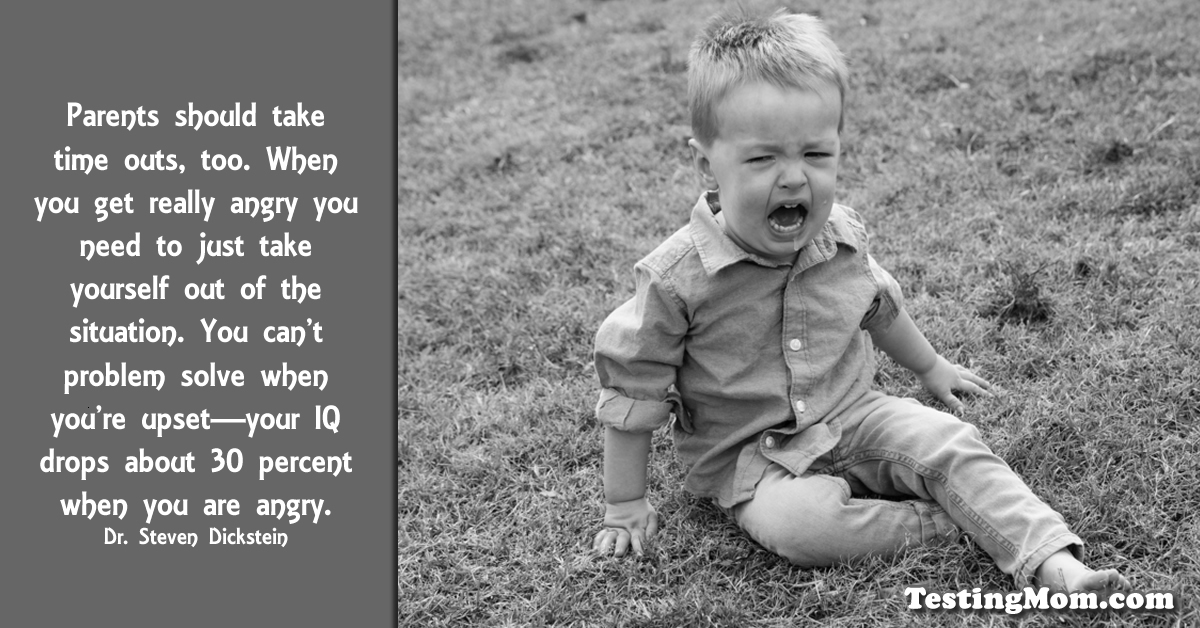› Tears, Tantrums and Meltdowns, Oh My!
Tears, Tantrums and Meltdowns, Oh My!
posted by Karen Quinn, The Testing Mom - October 17th, 2016
Tears Tantrums and Meltdowns
What’s the difference between a tantrum and a meltdown? Tantrums are short-lived and tend to subside if nobody’s paying attention. But if you’re the parent of a child under 5, you’ve dealt with at least one full-blown public meltdown — and today, I’ll help you understand why they happen and how to defuse these embarrassing emotional outbursts.
What are the Triggers?
Loss of emotional control after the “Terrible Twos” (or “Threenagers,” a more recent neologism that describes type of toddler) is actually a symptom that your child’s struggling to deal with emotions that he or she doesn’t yet know how to self-regulate. So whether it’s hearing you say “no” after grabbing a candy bar at the store or turning off the TV because it’s bedtime, your child gets frustrated by feeling that you’re deliberately withholding something in an unjust way. Anxiety is another trigger for meltdowns at this age. Kids haven’t yet learned the skills to realize how illogical and out of proportion their reactions can be, regardless of the situation.
Most kids develop the ability to self-soothe and delay gratification around age 4, so if your child’s in preschool or Kindergarten and prone to frequent or extreme emotional outbursts, some underlying causes may include:
- Stress-related anxiety. If a parent is often absent, there’s no consistent schedule at home or an older child acts out to get more attention, kids may develop a maladaptive response (such as negative attention-seeking behavior, especially in public).
- Undiagnosed learning disabilities, such as ADHD, autism spectrum disorders or sensory processing issues. If your child has a history of aggression, irritability, being overwhelmed by too much stimulation, misbehaves primarily in school or has trouble articulating feelings, a medical doctor or mental health professional can help diagnose potential problems.
- Disruptive Mood Regulation Disorder (DMDD). Child psychologist Dr. Vasco Lopes says this relatively new condition is characterized by severe outbursts with chronic bouts of irritability in between. “If you feel like you have to walk on eggshells around your child to avoid setting them off, seek out a psychologist who specializes in diagnosing and treating young children,” advises Dr. Lopes.
Here are Three Positive Ways to Deal with Your Child’s Tantrums:
- If the outburst isn’t dangerous, ignore it. Withhold your attention from behavior you want to discourage, and give great attention again instead on behaviors you want to encourage–for instance by saying when you calm down, I will give you my attention again, then we can talk.
- Use a calm, steady voice to comfort your child. Modeling relaxation techniques (like breathing slowly and deeply together) teaches your child a way to self-soothe and de-escalates the situation.
- Afterwards, praise your child’s efforts to calm down and communicate better. Compromise with your kid starts by setting clear behavioral expectations. Instead of saying “You need to behave at grandma’s,” try this: “When we have dinner at grandma’s, please wash your hands, stay seated until everyone’s done eating and then you can play with your new toys.”
Remember, during those tears, tantrums and meltdowns, we set the temperature and tone for what goes on in our homes.
Our facial expressions, tone and body language often coveys what we are feeling about the situation. So take it all into account, as you respond kindly, firmly and lovingly–teach your child life skills that will last a lifetime!




Tell us about your experiences